By Charles Borsellino
I was recently asked by my CASA supervisor if I was available to take on a new CASA child. It made me think about the road I took to be a CASA volunteer. I left Waco in 1975 to pursue a career in Houston and moved back in 2012 after retiring a second time. I would hear occasional radio spots about CASA, something I guess I overlooked in Houston for the 37 years I lived there. My involvement was a very slow process, but I eventually took time to find out what CASA was all about. After doing so, I realized that this might afford me an opportunity to actually make a positive and lasting impact on a child’s life. I retired from teaching and found some of the students who showed so much promise in my classroom had been pushed into troubling situations as they got older. As a teacher, you have the opportunity and means to prepare and motivate children, but it is only for a short time. Outside of school, many grow up in troubled homes and surroundings that have more impact than I, as a teacher, could ever hope.
I finally signed up to be a CASA volunteer advocate in 2019. I attended classes for three Thursday evenings with eight really great and caring classmates and knowledgeable instructors who were passionate about the children for which the program is intended. We learned about the laws, procedures, and paperwork (there is always paperwork) through in-class instruction and assigned homework. But we also got to meet seasoned volunteers at our sessions. They answered our questions and gave us insight into the emotional highs and lows they encountered.
We graduated as the largest class of volunteers in McLennan County. Everyone who started the first day finished and was sworn in by Judge NikkiMundkowsky on July 30, 2019. We soon met with our assigned supervisors and reviewed the casework for the child (or children, in the event of siblings) we had been assigned. As I read the Department of Family Protective Services (DFPS) report it was hard to imagine even a little of what my CASA child had been through. I remember wondering how a person who had been through so much could ever grow up and lead a normal and productive life. How could any input from me be of any use?
I didn’t have long to think about it. A court date sprang up almost immediately and I had only a short time to meet my child, the DFPS caseworker, Attorney ad litem, Assistant District Attorney, the placement (family keeping the child) and the birth parents. I had to prepare a Court Report while trying to recall everything I had been taught in the classes. I have to admit, it was a pretty daunting experience. I soon learned that my supervisor was always willing to help and I have now come to depend on her whenever I encounter anything I am unsure of. In court I was prepared to give my recommendations but found myself called to testify, something for which I was not prepared for. That was followed by what seemed like continuous activity.
There seemed to be one hearing or conference after another. I observed visitations at the DFPS offices and visited the placement family that had taken my CASA child in. I made appointments with teachers and counselors and probably learned more about my CASA child than I knew about my own. I listened to the facts and advocated for my CASA child’s best interests. I also discovered that some things that at first seemed black and white became gray over time. It’s a humbling experience when you discover your beliefs about someone or something might be wrong. Still, as chaotic as things got to be at times, a visit with my CASA child always made everything worthwhile. That is one amazing kid.
I have gotten to know the stakeholders in the case pretty well during my time with this case, though the players seem to change. Of course, the teachers change from one school year to the next. Those kind of changes are expected and easy to handle. But even attorneys involved have come and gone. Then there are the DFPS caseworkers. We are on our third. I have gained a lot of respect for those caseworkers. Here I was finding it hard to keep up with just my single CASA child while the caseworkers juggled around twenty. Each of their cases involving weekly court appearances and court reports, and children in situations that would make nearly anyone cry. Yet I have been impressed with each as they’ve shown compassion and a high level of caring for their charges during the limited time available. I have spoken with ours on weekends and holidays. I don’t know when they take a break.
After talking to other volunteers I have learned that most cases are not so active and testifying in court is very rare. Regardless, each volunteer has one goal, to advocate for what is best for the child. It has been a great experience and one that I hope benefits my CASA child and, in turn, our community.
All that brings me to why I am writing this. I feel it is important for me to remain a CASA volunteer after my CASA child’s disposition. As the advocate for such a child I might be the only constant in an otherwise confused and sad situation. While I don’t believe I have done anything that anyone else couldn’t have done, I do believe it is important that it was done, and I did it.
For more information about how to become a CASA please contact CASA of McLennan County at [email protected] or call (254) 304-7982.
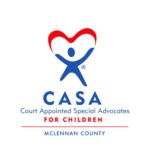
Charles Borsellino was born and raised in Waco, but moved to Houston in 1975 to join the Houston Police Department. Before retirement he went back to college at the University of Houston to get his teaching certificate. He taught elementary school in Houston until he retired from Houston ISD and moved back to Waco.
The Act Locally Waco blog publishes posts with a connection to these aspirations for Waco. If you are interested in writing for the Act Locally Waco Blog, please email [email protected]for more information.
By Jamie Willmann
In a time where much dissension exists, where the world is hurting out of a lack of love and community, and where isolation has hindered social interaction, we can find a sense of connection in the most unexpected places.
There is benefit in meeting someone who is experiencing the same trials or pain we are going through. Though we may all come from differing backgrounds, we can find unity in this COVID-19 disaster by digging a little under the surface. Underneath, we still find persons who have emotions and feelings that are directly affected by the state of the world.
Finding commonality in trials breeds possible connection. When we relate to one another, sympathy is present. It creates a sense of safety knowing that someone knows what we are experiencing. We may not feel as lonely in our trials anymore, and it creates an internal sense of validation.
People across the world are experiencing an influx of changes to their normal routines. By nature, we are adaptable to new environments and changes, but the pandemic is entirely on a new scale. It is bringing new situations that we never thought possible.
We are not designed to be isolated from others. We crave community and the presence of others. As we now adjust to something that goes against our nature, problems arise. Anxiety increases, and irritability becomes present.
In the moments when you feel COVID-19 has shattered your daily life, imagine that you are standing at the edge of potential for growth. Although you may feel anxious, depressed, or fearful, you also share in the fact that there is growth that can come out of this. You, however, have to choose that path.
The first step is acknowledging you need help and then accepting a helping hand from your neighbor.
There is a conception of mental health that needs to be stopped. Many believe they must appear as if they have it all together, which then inhibits them from receiving the help that could change the trajectory of their daily lives. We must break down these expectations to allow others in to help us.
Whether you are facing job loss, money problems, sickness, or family loss, know that you are not alone. Nowhere does it say that you have to do this on your own.
Our Crisis Counseling Program (called Texans Recovering Together) is made possible by a dedicated group of professional counselors.
— We are a team of people devoted to providing accessible, caring, and responsive services.
— We are here to listen to you, to build you up, and to provide you with what you need to press on.
— We are a network of community support that is here by your side.
By empowering our communities and taking a strength-based approach, our services provide empowerment to the community and resilience to combat the fear. We believe that we are better together, and we want to help you through these hard times.
Call us at toll-free at (866) 576-1101 to speak with a counselor, or request counseling here.
We are #TexansRecoveringTogether. We are here to help you recover.

Jamie Willmann was raised in a Christian home and was taught to serve and love others at an early age. She has a passion for making people smile and brightening people’s days. Jamie came from Wisconsin three years ago to attend Baylor, where she graduated with a degree in international studies. She now devotes her free time to self-care, exercising, relaxing in nature, and fellowship with friends.
The Act Locally Waco blog publishes posts with a connection to these aspirations for Waco. If you are interested in writing for the Act Locally Waco Blog, please email [email protected]for more information.
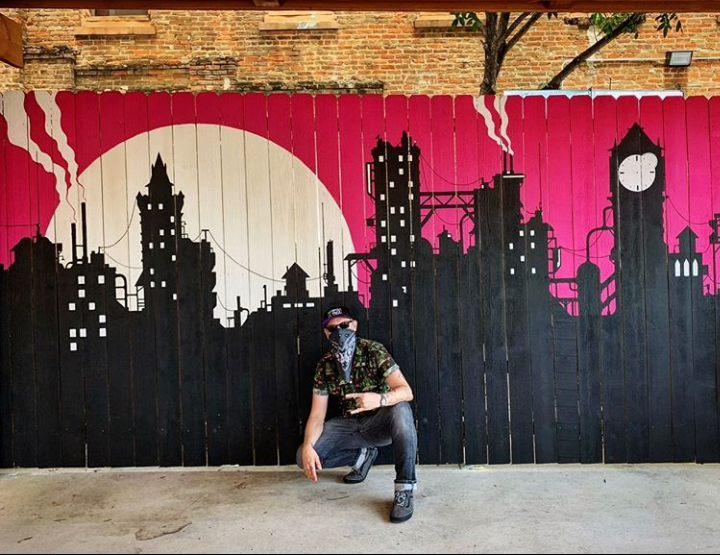
By Debbie Wright
Shay Scranton is a Waco local who has recently contributed to the growing list of murals in the Waco Community. His mural can be found at One Day Bar , one of the new coffee-and-cocktails establishments downtown on Columbus Ave. As a local creative, Scranton runs his own graphic design company and has worked with multiple companies around town. His lifelong interests in drawing and illustration, combined with his passion for metal music and the alternative scene, have led to a collection of works with a special focus on death and dark themes.
Scranton describes his most recent mural as “Deisel Punk “ with ties back to stylings of Mad Max, early comic book skylines, and inspirations from artists and creatives like Frank Miller and Kris Straub. “I really dig making these two-dimensional, cut-out looking silhouetted skylines. So, when the idea to do a skyline for this (the mural) it was perfect and really fun,” Scranton said. Though he is not normally a muralist, this passion project was kicked off by his friend Kyler Griffith, who is the owner of the new bar. With previous works with Native Sons, Pinewood Roasters, The Glass Phoenix, and Common Grounds (where he got his start as a band poster artist), his reputation with well-known local brands has grown his company and has made him somewhat of a veteran in the Waco art community. “I’ve seen a lot of things come and go. I’ve been here long enough and been working with local companies in some graphic capacity for 15 years,” Scranton said.
Scranton started his career as an artist right here in the heart of Texas, though he spent his early life as a musician and has traveled far and wide. Since Scranton started in the music industry at the young age of fourteen, with the Waco punk band Well Inside Out, music production and the alternative lifestyle has influenced his artistic style and personal aesthetic. “I am constantly experimenting with new ideas and styles and things, just to see what works…but when I started doing artwork related to music, band T-shirts were my favorite things to do. The style kind of developed around that. It was very detailed oriented and I want to create images so detailed they tell their own story,” Scranton said.
Scranton specializes in shirt designs, band posters and logo designing. With subjects ranging from monsters, Dungeons & Dragons designs. Many of his works are playful yet dark expressions with high contrast colors; complex, hyper-stylized characters; and heavy metal lettering. This has evolved from some of his past projects like Funeral Confetti (his art novelty company), where he designed custom enamel pins, patches and did home screen printing. Along with that, he has worked with other media and even produced a full-length Dungeons & Dragons show called Darkest Dove that can be found on Youtube. He hinted there were some new things in the process of being completed, however, he prefers to keep some things secret until they are complete. For more recent work, you can find him on social media @shayscranton and through his website at http://www.shayscranton.com/. You can also contact him at [email protected].

Debbie Wright runs the local Know Waco Podcast, which features upcoming events and activities happening in and around the Waco area. She is a recent Texas Tech graduate, with a major in communications and minor in public relations. She has lived in the Waco area for ten years and loves to work with local creatives and artists.
The Act Locally Waco blog publishes posts with a connection to these aspirations for Waco. If you are interested in writing for the Act Locally Waco Blog, please email [email protected]for more information.
By Mia O’Suji
Upon entering my first year of college, I was unaware of systemic inequities in our education system and how they would play the largest role in the trajectory of my life.
The residual effects of these systemic challenges led me to obtain a bachelor’s degree in English, with a minor in education. By pursuing a career in education, I envisioned myself eradicaticating structural barriers hindering Black and Latinx students in low-income communities from having access to a high-quality education.
Although I studied education in my undergraduate program, I chose to join the mission of Teach for America and relocated to Houston to serve as an 8th grade English teacher for a public charter school.
While much of my and my students’ successes can be attributed to my undergraduate program and Teach for America, the support I received from a local Alternative Certification Program (ACP) deserves much credit for my growth as a first-year teacher because of the ongoing training and support it provided. The development I received consisted of intensive pre-service training, frequent observations and feedback from an instructional coach, and face-to-face professional development opportunities.
My story supports the vision and mission of Prosper Waco’s Center for Transforming Alternative Preparation Pathways (CTAPP), where I am now director of content development and programming. CTAPP became a part of Prosper Waco and the Greater Waco community in September.
CTAAP believes all prospective teacher candidates deserve equitable, high-quality preparation both prior to and during their first year in the classroom. Many educators still choose traditional, four-year, university-based teacher preparation programs, but a majority of Texas’s newest teachers opt to complete an alternative route to educator certification.
Since 2015, the percentage of total new teacher candidates enrolling in ACPs has increased from 70% to 75% in 2017-18 (U.S. Department of Education, Title 2 data). Given that Texas certifies more new teachers annually than any other state (over 22,000 in 2017-18) and that Texas teacher candidates are more likely to enroll in ACPs, this has created a robust, yet efficient, pipeline for individuals looking to enter the teaching field.
For many candidates, alternative certification routes serve as a bridge between theory and practice — helping those with undergraduate degrees secure the necessary training and skills to enter the classroom without an education degree. For others, ACPs present an opportunity to explore a new career that will impact the lives of future generations of Texans.
For novice teachers, ACPs offer critical on-the-job support and coaching to propel student results forward. Though each candidate brings unique life experiences to an ACP, they all possess a common goal: to learn new skills and provide a public service to better support the students and communities where they will teach.
In Waco, several pathways exist to achieve alternative certification through McLennan Community College. Candidates can opt for MCC’s own ACP program or participate in programs from Tarleton State University and Texas Tech University at the University Center at MCC. Whatever pathway candidates choose, CTAPP exists to ensure that their preparation is top-notch; and soon, these teacher candidates will be filling classrooms around the Waco community to better serve the PK-12 student populations who deserve excellent educators.

Mia O’Suji is director of content development and programming for Prosper Waco’s Center for Transforming Alternative Preparation Pathways. Mia is a graduate of Howard University. Prior to joining Prosper Waco, Mia served as a PK-12 classroom teacher, a district instructional coach, and a dean of instruction in Houston. Her wide array of experiences have provided her with thorough knowledge of the inner workings of teacher preparation facilitation and coaching interactions. Mia’s passion for implementing rigorous, equitable teacher preparation practices has led her to the Waco community to spark innovation and collaboration to ensure the best outcomes for students. Mia may be contacted at [email protected].
(Press Release) The leadership team for the Heart of Texas CROP Hunger Walk invites you to our virtual walk on Nov. 15!
Over the past 50 years, tens of thousands of walkers have raised more than $500 million through the annual CROP Hunger Walk. The Heart of Texas CROP Hunger Walk always raises around $2,500, making it one of the most successful fundraisers for a small community walk.
This year, because of the coronavirus pandemic and the need for social isolation, we are introducing a Virtual walk.
We know that it is crucial that we find new ways to engage our community to continue giving to Church World Service and Caritas of Waco, the two recipients of the walk’s funds. The current pandemic is creating an ever-increasing need for food and resources for our local agencies and around the world. Caritas, for instance, is serving more than twice as many families as it did before COVID-19 reached our community.
The need is greater than ever. Now, more than ever, is the time to give.
This year the Heart of Texas CROP Hunger Walk and some 700 other communities nationwide are joining together in interfaith walks around the theme Ending hunger one step at a time.
Here are four ways to participate:
- You can sign up online at https://www.crophungerwalk.org/wacotx and walk on November 15 in isolation or with your family. (Be sure to take photos and announce on social media that you are joining the walk! Go to https://www.facebook.com/HeartofTexasCROPHungerWalk and tag us!)
- You can sign up online at https://www.crophungerwalk.org/wacotx and walk in spirit.
- You can sponsor someone else who is walking in isolation.
- You can video yourself walking before Walk Day and send us the video, which we will incorporate into our virtual presentation, set for 3:00 pm on Nov. 15. (Videos are due by Oct. 31 to be included in the Nov. 15 presentation. Please email [email protected] for instructions.)
In doing any of these things, you will show your solidarity with the millions of neighbors around the world who must walk to live. You will also show your solidarity with the millions served by local food pantries, food banks and meal sites in the United States and in our community.
The local beneficiary for the Heart of Texas walk is Caritas of Waco. Founded in 1967, it is a community-wide agency with interfaith support. Located at the corner of 15th & Mary in downtown Waco, the organization normally includes an emergency assistance program for utilities, rent and medicine; two thrift stores and a thrift store warehouse; one of the largest food pantries in Central Texas; and a Case Management program. In March, Caritas reorganized its services, implementing a drive-through food pantry, in order to meet the soaring need and keep its staff and clients safe. The number of people coming to the pantry for food (formerly more than 100 families a day) more than doubled and continues to increase. (For information and updates, call 254-753-4593, go to www.caritas-waco.org, or check the Caritas Facebook page at https://www.facebook.com/caritasofwaco.)
The international beneficiary is Church World Service (CWS), the relief and development organization that sponsors CROP Hunger Walks. In an effort to fight hunger and build healthier communities, CWS provides clean water and hygiene training in Vietnam, combats droughts in Nicaragua, and stocks shelves in hundreds of food pantries across the United States. Hundreds of CWS workers are responding in creative ways to COVID-related crises all over the world.
It’s easy to sign up and donate to our walk. Go to https://www.crophungerwalk.org/wacotx and click “register” or “donate.” You and your team members can make donations by credit card and or PayPal, and a receipt will be sent through email for tax purposes. Once you sign up, we will send you a link to the Nov. 15 celebration.
(City council, school board, planning commission, county commissioners – these groups and several others represent us. They do the day to day work of running our community. It is our responsibility to keep informed about their work so that we can help them represent us effectively. “Civic Insights” by Jeffrey Vitarius is a regular feature of Act Locally Waco. Its purpose is to help us understand decisions that shape our community so that we can participate effectively as informed, engaged residents of Waco. – ALW)
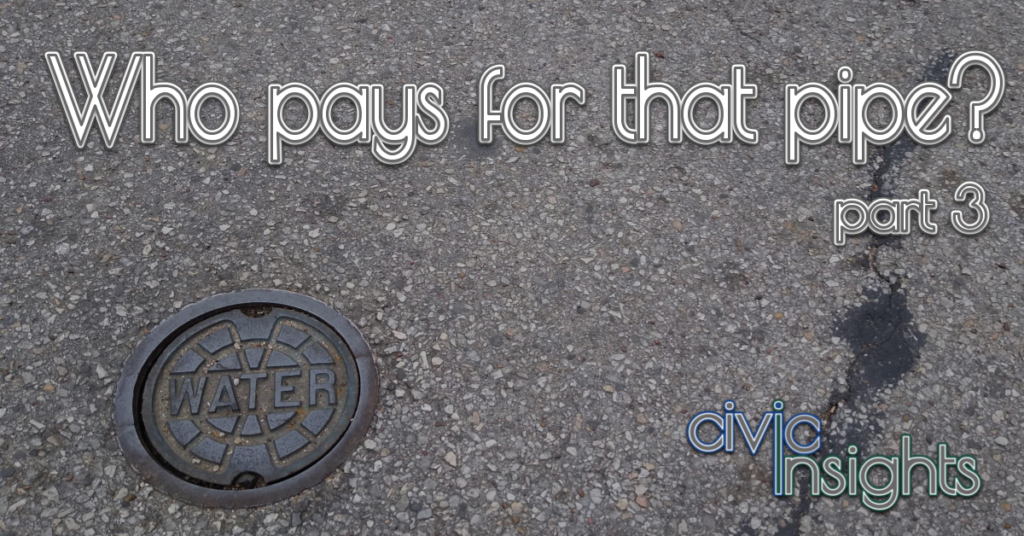
By Jeffrey Vitarius
Back in September, we began this series with a broad look at what an impact fee policy is. Two weeks ago, we focused on the legal process for establishing an impact fee. This week we will be taking a look at pipe-related details of the report that serves as the basis for any impact fee policy in Waco. Next week, we’ll take a look at the roadside of things. Then we will wrap up on the 23rd, by looking at the policy the City will be considering on the 20th.
The goal of this report (developed by Freese and Nichols, Inc) is to calculate the maximum impact fees that could be applied under Chapter 395 of the local government code. As we discussed two weeks ago this involves projecting what kind of development will occur, what the demands of that development will be, what projects will be needed to meet that demand, and how the cost of those projects can be divided up amongst the new developments (steps 2 and 4 of the legal process). How these calculations are conducted for pipes and roads are slightly different so we will take a look at each separately, but both follow a similar pattern of calculations. We will be addressing each step in detail below:
- Determine a service area
- Identify a way to connect demand for service to supply for service
- Calculate increased demand for services
- Review existing supply for services
- Determine and cost projects needed to meet increased demand
- Identify service unit to divide costs amongst projects
- Calculate maximum impact fees
Let’s start with the Pipes:
1. Service Area
Service areas are the geographic boundaries of the impact fee policy. All the new demand, all the projects, and all the fees should be contained within the service areas. Chapter 395 provides guidance on what these areas can be or must be. For pipes, the service area is fairly straightforward. It includes the city limits of Waco along with Waco’s extraterritorial jurisdiction (ETJ). An ETJ can be thought of as a “buffer” around the city where the city can exercise certain kinds of authority. For Waco, the ETJ extends approximately five miles beyond the city limits unless there is another city in the way. For example, Woodway is not in the City of Waco’s ETJ since it is its own city.
2. Connecting Demand and Supply
Here we need to find some measurement to connect a new house or business park (demand) to the existing system and potential projects (supply). The measurement needs to be scalable to the variety of demands that will come from new development and be measurable for distinct projects and supply systems. For pipes that measure is millions of gallons per day (MGD). So, for a new housing development, MGD measures the millions of gallons of water needed each day and the millions of gallons of wastewater produced each day.
Water systems have a unique difficulty in that they are not used consistently over days and years. This makes sense if you think through your personal use of the water system. In hot dry summers you are more likely to be watering a lawn than in cold or wet winters. You are unlikely to be using the water system at 1:00 am, but you are likely to be washing your clothes, or taking a shower, or washing your hands sometime in the early morning or afternoon (for those interested these daily patterns are also called “diurnal patterns”).
Due to these daily and annual changes, looking at average MGD does not give a full picture of the demands placed on the water system. Instead we have to look at maximum MGD as well. That is the maximum number of millions of gallons used on any one day during the year. Interestingly, the report uses a “maximum day to average day” ratio of 1.7 meaning it anticipates that on average a maximum day consumes 1.7 times as much water as an average day.
Finally, to calculate increased demand over time the report calculates average MGD per resident and employee (for water its 135 gallons per day per resident and 115 gallons per day per employee). There are some additional complications to the wastewater system, but the process is largely the same.
3. Increased Demand
Above we were able to tie increased demand for pipes to increases in population and employment. Now we need to figure out what that increase actually is and how it is geographically spread out (this impacts the specific projects that will need to be undertaken).
As we touched briefly on two weeks ago, we have to start with a broad look at how much Waco will grow in terms of population and employment into the future. To do that, the study begins with a look at the past. Between 1960 and 2010 Waco’s population grew on average 0.49% per year (the technical metric for those interested is compound annual growth rate). Between 2010 and 2020 the population grew by 1.11% per year. Additionally, the number of jobs in Waco was on average between 45-48% of the total population. So, for about every two people there was about one job. Due to this ratio being fairly constant, jobs can be considered to have grown at approximately the same rate as population.
Freese and Nichols then (in consultation with the Waco Capital Improvements Advisory Committee) took a look at a number of different growth rate scenarios and ultimately determined that 1.2% seemed like the most reasonable projection of population and employment growth in Waco for 2020-2040. Additionally, they noted growth was likely to be substantially greater in the ETJ (as there is more room for development in this area). For the ETJ they projected between 4.9% and 5% population growth and 4.06% and 5.74% employment growth. Now that we have general growth rate numbers, we need to understand how that growth is spread out geographically.
To divide growth geographically, the report uses “traffic analysis zones” (TAZs). These are geographic units used by the Waco Metropolitan Planning Organization (a good topic for a different time) for demographic analysis due to their internal similarity (areas within TAZs are similar to each other) and traffic generation. Here is a map of some of the TAZs within Waco. This map does not come from the impact fee study,but should give some understanding to what TAZs are.
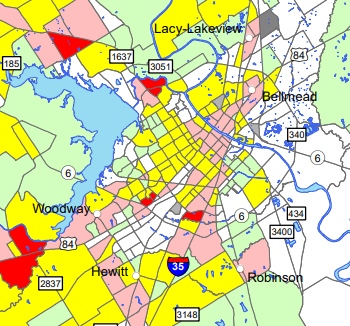
Freese and Nichols along with City Staff analyzed each TAZ. They looked at current development (what is already there), the potential for development (is there a big open field?), projected land use, and any specific projects that were known to be in the pipeline. Based on this analysis they were able to project growth in employment and population within specific TAZs. Here is an example of the result:

A quick side note, the land use assumptions used in this analysis come from Waco’s Comprehensive Plan 2040. This was the same plan that identified the impact fee policy as critical.
Now we know: a) expected new residents and employees in each TAZ and b) expected new pipe usage based on new residents and employees. Combining the two we know how much water/wastewater will be needed and where it will be needed.
4. Existing Supply & 5. New Projects
Now that demand is known geographically, Freese and Nichols along with City Staff were able to identify where the existing system would need to be upgraded to meet with the projected demand (this process involved a review of other recent studies focused on the subject). The result is a list of twenty-three water projects and seventeen wastewater projects. Here are some examples: a 16-inch water line at Peach Street, a 1.0 MG ground storage tank at the airport, a wastewater treatment plant in China Spring, and a lift station expansion at TSTC. Costs for each of these projects were calculated based on the rules established by Chapter 395 (which is fairly specific about what kinds of costs may or may not be included).
Since impact fees cannot be used to support existing development or development that will take place over 10-years from now, the report takes each of these projects and determines what percentage of the project’s capacity would be used right now, and what percentage would be used in 2030. For example, the 16-inch water line at Peach Street would be used at 25% capacity today and 60% capacity in 2030. That means 35% of the project cost can be considered to be the cost of new development between 2020 and 2030.
Combining all the allowable costs together, the report then applies a 50% credit to the costs. This credit is meant to represent the future tax revenues that will come from the increase in development. Essentially it represents how the new development will “pay” for these improvements through the regular tax process rather than the impact fee.
At the end of this process we have the total eligible impact fee cost – the total cost of increased capacity due to new demand after consideration of a credit for future taxes (water – $23,013,034, wastewater – $45,587,622). But how do we divide those costs up so that individual developments pay for them as they come into existence?
6. Service Unit
Chapter 395 calls for the establishment of a “service unit.” It defines “service unit” (in broad terms) as a standardized measure of consumption. Since it would be virtually impossible to determine the exact number of residents or employees a development would have, we cannot use the same metric we used to connect demand and supply (MGD per resident and MGD per employee).
Ultimately, for this study the connection of a single-family residence was used as the base service unit. The study then measures all other kinds of water and wastewater connections on the scale of single-family residence equivalents (on the basis of average flow). For an example a business park connection might be considered equivalent to ten single-family residences since ten times the amount of water flows through it (this is not a number used in the study, but rather a nice round one for an example).
7. Maximum Impact Fee
Knowing our service unit and our total eligible costs, the final step can be taken. A projection is made of the total new service units anticipated by development (in much the way step 3 proceeded). In the case of water and wastewater that number is 12,753. That is, the study anticipates that 12,753 “single-family resident connection equivalents” will be added to the water and wastewater system over the next ten years. With that number in hand, it is a simple matter of division to determine the maximum impact fee. The chart below completes the process.

Here we see that after all these steps the maximum impact fee allowable by law for water is $1,804 and for wastewater is $3,574. These numbers are the final product of that could process we discussed at the very beginning of all of this. Whatever the outcome of the should process is, the impact fees cannot exceed these amounts for a single-family residence connection equivalent.

Jeffrey Vitarius has been actively local since early 2017. He lives in Sanger Heights with partner (JD) and his son (Callahan). He helped found Waco Pride Network and now serves as that organization’s treasurer and Pride Planning Chair. Jeffrey works at City Center Waco where he helps keep Downtown Waco clean, safe, and vibrant. He is a member of St. Alban’s Episcopal Church and graduated from Baylor in 2011.
The Act Locally Waco blog publishes posts with a connection to these aspirations for Waco. If you are interested in writing for the Act Locally Waco Blog, please email [email protected]for more information.
By Olivia Evans
More and more jobs are requiring a technical certificate or a college degree. To meet the demands for a more skilled workforce, McLennan Community College offers a variety of classes and programs to help adults in the Waco community develop skills to match the jobs available in the area. These free classes served over 900 adult students in the 2019-20 academic year. MCC’s Adult Education and Literacy (AEL) program offers various pathways and classes including:
- High School Equivalency (HSE) Preparation Classes (formerly GED) improve basic skills in preparation for the High School Equivalency Test.
- English as a Second Language (ESL) Classes equip English language learners with the skills needed to advance in their careers and participate fully in their communities.
- Transition Classes help students improve their workplace and/or college preparedness skills.
- Career Pathway Classes provide college and workplace readiness in an in-demand career field.
In the midst of the COVID-19 pandemic, the AEL program has continued its commitment to help the Waco community achieve their educational and career goals by making swift changes to adjust to the new circumstances. “Within three weeks, our small staff completely switched to remote classes using the Zoom platform,” said AEL Instructor Margie De Laurell.
Currently, all 30 classes offered are held virtually. Despite these unprecedented times, the AEL staff is dedicated to ensuring that individuals in Waco, who are looking to advance themselves in their careers and education, are able to do so. Student success includes adjustments and additional learning not just from students but from instructors as well. “English-language learners and many of our instructors learned how to use their devices like never before! Digital literacy has always been part of the curriculum, but thanks to the pandemic, we all got a crash course,” said De Laurell.
AEL classes are free and open to anyone over the age of 18. There is no cost to community members other than time and dedication. All of the AEL students are extremely hardworking and exemplify the work ethic and positive mental outlook that is required to succeed under very challenging circumstances, including a global pandemic.
“As instructors, we are constantly inspired and motivated by our learners’ perseverance, courage, and resourcefulness,” said De Laurell.
For more information about registration AEL programs, call (254) 299-8777 or visit www.mclennan.edu/adult-education-programs/.

Olivia Evans is an intern in McLennan Community College’s Marketing and Communications office. She is a senior at Baylor University studying Public Relations and Corporate Communications. Olivia is a Houston, Texas native and plans to work in sports and entertainment digital marketing.
The Act Locally Waco blog publishes posts with a connection to these aspirations for Waco. If you are interested in writing for the Act Locally Waco Blog, please email [email protected]for more information.
By Jack Hill
I recently completed poll working training in anticipation of working Early Voting and Election Day sites. I was shocked to learn that, although Waco has mask requirements in place for all restaurants and bars, masks will not be required for anyone who votes, neither during Early Voting nor on November 3rd. Rather, signs will be posted outside voting sites stating only that “masks are recommended.”
Gosh, I wanted to help out, but it is too risky to do so given the lack of safeguards for poll workers in Texas. According to the CDC, three factors especially facilitate the spread of Covid-19: being in
- crowds,
- enclosed spaces with others with limited ventilation and,
- an enclosed space with persons who are not wearing masks.
Evidence indicates that Covid-19 is primarily spread by aerosols—microscopic particles produced when we cough, talk loudly, yell or sneeze. Aerosols may remain in the air long after persons who emitted them have left the vicinity. They may also travel well beyond six feet.
To work in any enclosed space, virtually non-stop for 5-12+ hours, for the 18 consecutive days of Early Voting —in which individuals are permitted to come and go without wearing masks—is not only unnecessary from a public health standpoint, it is like playing Russian roulette—you may not get the bullet, but then again, you may.
Several states, such as Colorado, have state-wide mask mandates in place. Texas is not one of them
The nonpartisan organization, Mi Familia Vota, together with the Texas NAACP, have filed a lawsuit to protest the state of Texas’ decision to tolerate voters who refuse to wear a mask on Election Day. But even in states, like New York, which also do not require masks, it is recommended that each polling site have an isolated area where poll workers in special protective gear can assist voters who are unwilling to wear a mask.
This is a state-level decision. Come on fellow Texans, call Governor Abbott (512- 463-2000). We can do at least as well as New York!

Jack A. Hill is a political activist and Emeritus Professor of Religion and Social Ethics at TCU, where he taught for the past two decades. Prior to coming to TX, he resided in the Caribbean, the Fiji Islands and Southern Africa for 15 years of an international teaching career. He was the first U.S. born Christian Church (Disciples of Christ) Partner in Mission to be ordained by a church overseas—the Jamaican Disciples of Christ (April 8, 1980). He has written eight books, including Ethics in the Global Village: Moral Insights for the Post 9-11 U.S.A. and I-Sight: The World of Rastafari. He was a Fulbright Scholar (Distinguished Chair) in Scotland and served as President of the American Academy of Religion in the Southwest. He has two daughters and six grand-children. Dr. Hill resides in Waco with his wife, Katherine Logue.
By Alicia Jallah
These are challenging times we are currently in. There have been significant changes that we all have had to make to our lifestyles in order to adapt to the COVID-19 pandemic. Even with these changes many in our community are still struggling to meet basic needs such as housing, food and utilities because of unemployment, underemployment and/or trying to catch up on bills that accrued during the shelter-in-place order.
At Caritas we are grateful that we are able to stand in the gap and help those who are having to make difficult decisions during this season.
Do you need assistance or know someone who does? Here is how we can help.
Veterans Case Management
- Veterans receive specialized assistance through a grant provided by the Texas Veterans Commission. Our case manager Mr. Harris, assists with financial needs such as housing, utilities and childcare. He can be reached at 254-753-4593 ext. 233 or [email protected].
COVID Case Management
- Those that have been personally affected by COVID due to layoffs, diagnosis, etc. can receive financial assistance funded by the COVID-19 Community Response Fund created by the Waco Foundation and United Way of Waco-McLennan County. To receive more information about qualifications you can call Ms. Ramon at 254-753-4593 ext. 226 or [email protected].
“I lost my job due to Covid-19, I was in panic mode and unemployment was a mess. I applied and it took months before I even heard from someone. I am a single mom with two kids, it was really rough. I called Caritas and was connected with a Caritas case manager that day and she answered all of my questions immediately. Caritas was able to pay my utility and mortgage bills. It gives me hope to have an organization like Caritas in our community.” — Sabrina, Caritas Client
Utility Assistance
- When funds are available we are able to assist with utilities call the main line at 254-753-4593, to hear more information about qualifications and current assistance.
Food
- Our drive-thru food distribution occurs Monday- Friday from 8:30-11:00 and 1:00-2:00 (weather permitting). The drive-thru line is on the front side of the building facing Mary street and wraps around 15th street. The food will only be loaded into the trunk. Please, make sure that trunks are empty before getting in line. Households can come twice a month and will be asked for a photo id.
Employment Case Management
- We work directly with employees to find and maintain employment. Our case manager, Ms. Tyler can help employees with financial assistance for transportation, housing and child-care. She can be reached at 254-753-4593 ext. 234 or [email protected].
Hidden Treasures
- Our Hidden Treasures thrift stores offer low cost options for our community. They carry household essentials, clothing, furniture and more. Our stores are located at 3912 Bosque Blvd and 3016 Bellmead Dr and are open Monday-Friday, 12:00-6:00 and Saturday, 10:00-6:00.
SNAP
- We offer enrollment assistance for state and federal programs. Clients are individually guided through the application process online or with paper applications. Ms. Morales can be reached at 254-753-4593 ext. 204.
Those who would like to join us in the fight against poverty and food insecurity can do so in various ways. Join us by volunteering your time in the distribution line by loading the food into the trunks of our clients. We need a lot of food to meet the needs; individuals, business and organizations can host food drives for us. Our common needs are pop-top cans of soup and proteins, grains such as noodles and oats and kid-friendly items like applesauce, mac-n-cheese and granola bars. Those who would like to be financial supporters can do so on our website caritas-waco.org or mail checks to 300 S. 15TH St. Waco, Tx 76701.
We could not do this without the continued support of our community and donors. Even during these challenging times, we have seen the best of humanity come together to support those who have been affected the most.
We hope that you and your family stay safe and well!
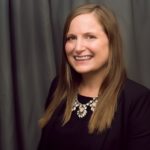
After earning her Masters of Arts from Denver Seminary, Alicia Jallah, entered the non-profit world to act on her calling of providing dignity and respect to those struggling in poverty. She currently has the privilege of serving as Co-Executive Director at Caritas of Waco. When she is not working you can find her in the glorious outdoors with her husband and son.
he Act Locally Waco blog publishes posts with a connection to these aspirations for Waco. If you are interested in writing for the Act Locally Waco Blog, please email [email protected]for more information.
(press release)
When COVID-19 forced the cancellation of Family Abuse Center’s annual fundraising event, Dancing with the Waco Stars, two donors committed to match up to $40,000 of all donations given before December 1.
The fundraiser, which is live online as Donating with the Waco Stars, has already raised over $8,000 in donations for the Waco shelter.
“The annual fundraiser is crucial for Family Abuse Center because the donations are used to fund expenses that aren’t covered by grants,” Executive Director Kathy Reid said. “Expenses like gas to drive survivors to medical appointments or work clothes for a survivor who is starting a new job.”
In 2018, 211 Texans were killed by their intimate partners.1 According to the National Coalition Against Domestic Violence, one in three women and one in four men have experienced some form of physical violence by an intimate partner.2
Lisa and Larry Jaynes, the donors responsible for the match, said among other reasons, they support Family Abuse Center because it provides a desperately needed service to its community.
“The many programs offered [at Family Abuse Center] are available to hundreds of individuals in our area to help them start a new life without being exposed to the constant abuse of themselves and their children,” Lisa Jaynes said.
Join Family Abuse Center in the fight against domestic violence by donating today and doubling your impact at FamilyAbuseCenter.org/Donate.
To learn more about Donating With the Waco Stars, visit https://www.familyabusecenter.org/dwtws2020/.
For more information about Family Abuse Center, email [email protected] or call 254-772-8999 for more information.
About Family Abuse Center – For 40 years, Family Abuse Center has worked to eliminate domestic violence in Central Texas by sheltering victims of domestic violence and by preventing abuse from occurring through intervention and education. If you or someone you know is at risk, please call Family Abuse Center’s 24-hour hotline at 800-283-8401.

